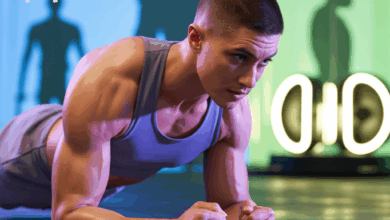Can You Workout After A Massage

You just left the massage table: muscles loose, head clear, and you’re wondering—should you hit the gym now or rest? That moment is familiar to many athletes, fitness lovers, and busy professionals. The short answer: yes, you can work out after a massage—but how, when, and what kind of exercise matters. Let’s break down safe strategies so you get the benefits of both massage therapy and training without setbacks.
Why timing and type of massage matter
Massages vary from gentle Swedish strokes to aggressive deep tissue work. A light relaxation massage typically eases tension and improves circulation, making gentle movement a natural next step. Deep tissue or sports massages target adhesions and break up scar tissue; they can leave you tender and sometimes slightly inflamed for 24–72 hours.
Key factors that influence whether you should exercise right after a session include:
- Massage intensity (Swedish vs deep tissue vs trigger-point).
- Purpose of the massage (relaxation, recovery, pre-event prep).
- Your current health status (injuries, recent surgery, blood clot risk).
- How your body feels immediately post-treatment.
Can you workout after a massage?
Yes—but choose your workout carefully. Light cardio, mobility flows, and gentle strength work are usually fine after a relaxation massage. If you’ve had a deep tissue session, plan lower intensity or wait 24–48 hours before intense lifting, sprinting, or heavy plyometrics. Always prioritize a proper warm-up and listen to your body.
Guidelines by massage type
- Swedish/relaxation massage: Short, light workouts are appropriate (20–40 minutes of walking, cycling, or mobility).
- Sports massage: If it was pre-event, you can often perform sport-specific warm-ups and drills. If it was deep and therapeutic, opt for recovery activities.
- Deep tissue or trigger point: Expect soreness. Avoid high-intensity sessions for 24–72 hours. Focus on stretching, foam rolling, and gentle movement.
Best post-massage workouts and variations
Below are practical, real-world workout options for different scenarios.
Light session (right after relaxation massage)
- 10–20 minute brisk walk or easy bike ride to maintain circulation.
- 15–20 minutes of dynamic mobility: hip circles, cat-cow, thoracic rotations.
- Bodyweight circuit: 2 rounds of 10 squats, 8 push-ups, 10 glute bridges—go easy on load.
Recovery day (24–48 hours after deep tissue)
- 30–45 minutes of low-impact cardio (swim or bike at conversational pace).
- Yoga or guided mobility flow focusing on breath and range of motion.
- Light resistance: single-joint work with moderate reps (3 sets of 12–15) — think banded rows, bodyweight lunges.
Performance day (massage before competition)
Many athletes receive a light sports massage hours before competition to reduce tension. If that’s the case, follow with an active warm-up, dynamic drills, and progressive loading specific to your sport. Keep intensity controlled and avoid anything that provokes discomfort.
Practical tips to maximize benefits and avoid injury
- Hydrate: Massage increases circulation and can release metabolic byproducts—drink water afterward to help flush them out.
- Warm up thoroughly: Even if you feel loose, gradually elevate heart rate and body temperature before intense work.
- Modify intensity: Reduce load, volume, or speed on the day of or after a deep massage.
- Use active recovery: Foam rolling, walking, and mobility keep tissue pliable without overtaxing the body.
- Listen to pain signals: Mild sensitivity is normal after a deep session. Sharp pain, dizziness, or significant swelling are red flags—stop and consult your therapist or provider.
- Plan sessions around workouts: For heavy strength or sprint training, avoid scheduling deep tissue massage the same day unless it’s specifically used as a pre-event tune-up and cleared by your coach or therapist.
Real-world examples
Case 1: Sarah, recreational runner — After a Swedish massage before a weekend long run, she did a 20-minute easy jog and dynamic drills. She felt more limber and performed well.
Case 2: Mark, strength trainee — Following a heavy deep-tissue session targeting his back, Mark waited 48 hours before his next heavy deadlift day, doing only mobility and light tempo work in the interim. This reduced soreness and improved recovery.
When to skip a workout after a massage
Avoid exercise if you experience:
- Severe tenderness or bruising after deep techniques.
- Dizziness, nausea, or lightheadedness following treatment.
- An open wound, recent surgery, or a condition that counterindicates massage or exertion.
Check with your massage therapist or healthcare provider if you have blood-clotting disorders, are on anticoagulant medication, or have other serious medical conditions.
Complementary lifestyle tips
- Refuel with a balanced snack: aim for a mix of protein and carbs within 60 minutes post-workout or post-massage to support tissue repair.
- Prioritize sleep: Most recovery processes, including those helped by massage, are optimized during quality sleep.
- Integrate massage into a training plan: Regular, appropriately timed massages can enhance performance and reduce injury risk when coordinated with your workout routines.
Frequently Asked Questions
Yes for light activity—walking, mobility, and gentle strength work are generally fine after a relaxation massage. For deep tissue or aggressive therapy, reduce intensity or wait 24–48 hours depending on soreness.
Many people wait 24–72 hours before resuming heavy lifting. The exact timing depends on how tender you feel and the size of the muscle groups treated. Start with submaximal loads and progress based on comfort.
Hydration is key—drink water and electrolyte-rich fluids if needed. Eat a meal or snack with protein and carbohydrates (e.g., Greek yogurt and fruit, or a protein shake with a banana) within an hour to support recovery. For more in-depth guidance, check our nutrition guides.
Conclusion — Can you workout after a massage?
So, can you workout after a massage? Yes—most of the time—with smart adjustments. Match the type and intensity of your exercise to the massage you received, prioritize hydration and warm-up, and give yourself extra recovery time after deeper, more aggressive treatments. Experiment and track how your body responds; over time you’ll learn the optimal timing for massage and training to boost performance and feel your best.
Ready to fine-tune your routine? Explore our workout routines, read practical wellness tips, and add massage into your plan like a pro. Try a gentle mobility session after your next massage and notice the difference—then come back and tell us how it went.





